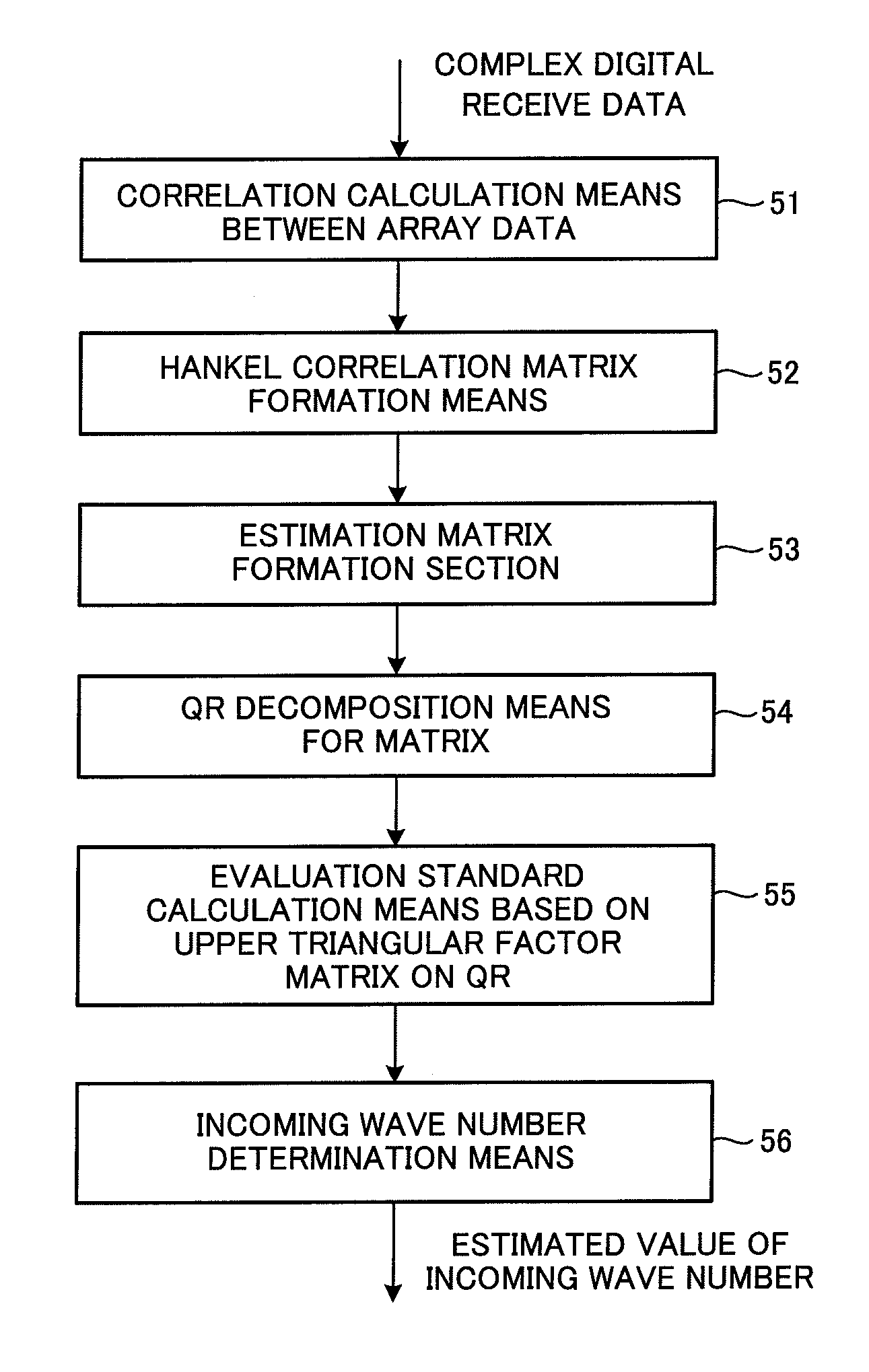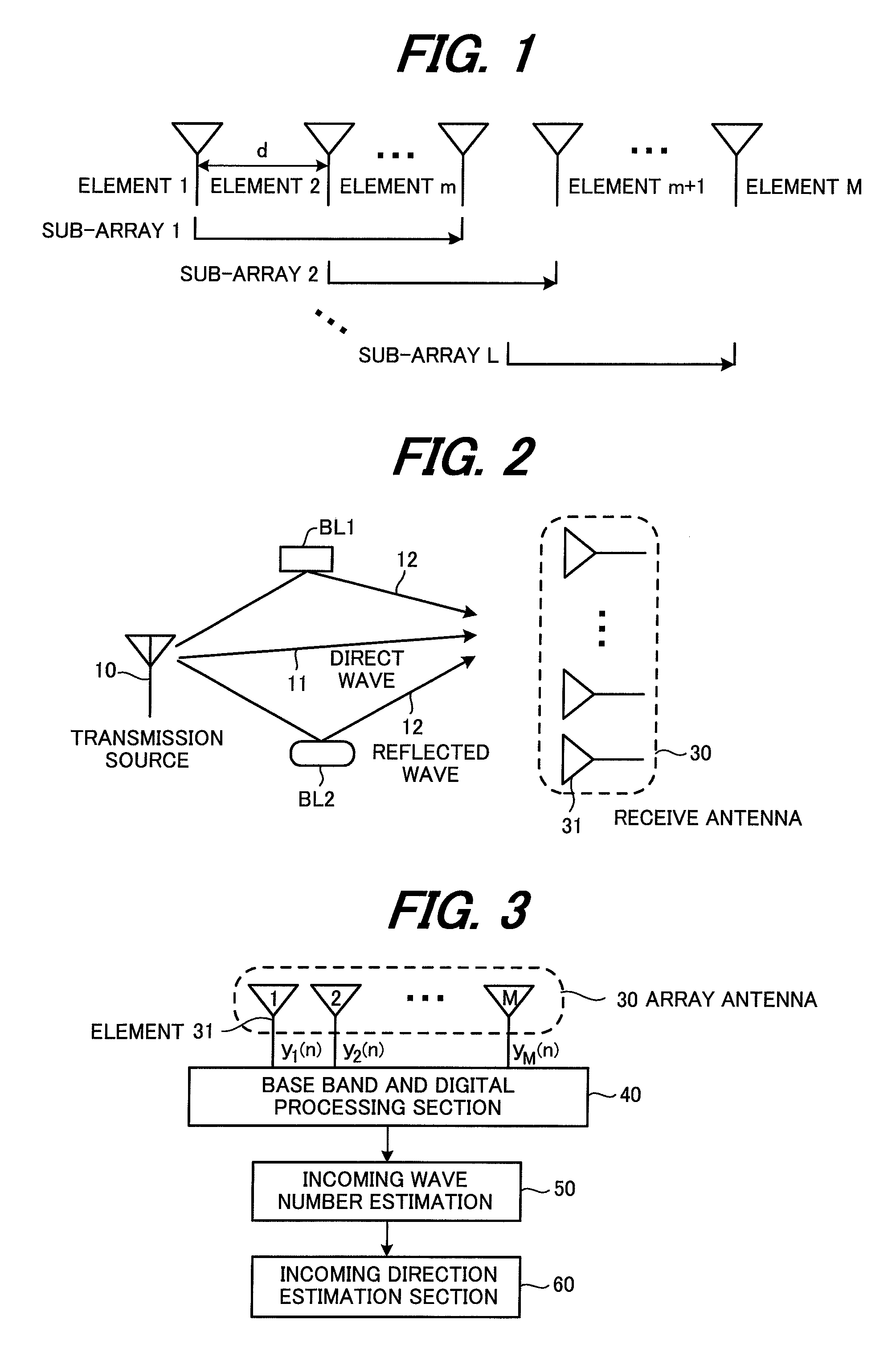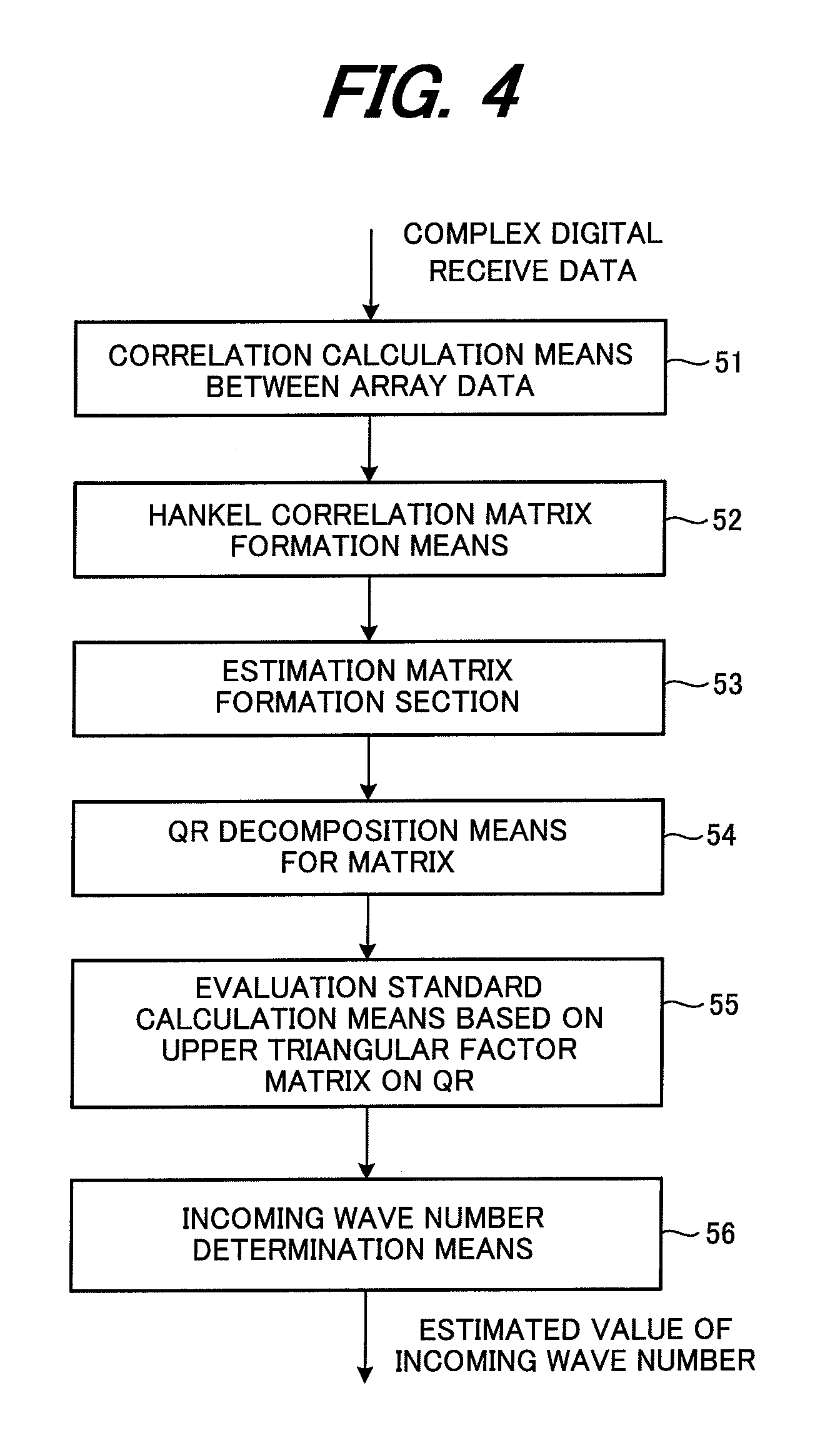Incoming wave number estimation method, incoming wave number estimation device, and radio device
a technology of incoming wave and estimation method, which is applied in direction finders using radio waves, multi-channel direction-finding systems using radio waves, instruments, etc., can solve the problems of complex calculation volume, huge calculation time, and essential eigenvalue decomposition processing and singular value decomposition processing, so as to accurately estimate the number of incoming signals
- Summary
- Abstract
- Description
- Claims
- Application Information
AI Technical Summary
Benefits of technology
Problems solved by technology
Method used
Image
Examples
first embodiment
(A) First Embodiment
[0050]The present invention relates to an incoming radio wave number estimation method and estimation device in a base station for estimating the radio wave incoming direction using an array antenna, and the incoming radio wave number estimation method and estimation device of the first embodiment will be described in reference to the drawings. In the following drawings, elements that are roughly the same or have a same function are denoted with a same reference symbol.
[0051]FIG. 1 is a diagram depicting a configuration of an array antenna in which M number of antenna elements are linearly arrayed with a spacing of distance d. FIG. 2 is a diagram depicting a positional relationship of a transmission source 10 and a base station receive antenna (array antenna) 30. As FIG. 1 shows, the array antenna 30 has a configuration of a uniform linear array antenna, and constitutes a multiple wave incoming direction estimation system. In FIG. 2, a direct wave 11 enters direc...
second embodiment
(B) Second Embodiment
[0086]In the first embodiment, the incoming wave number estimation method was described by creating the estimation matrix by
[0087]Φ^=[Φ^f,Φ_^f,Φ^b,Φ_^b],
but the incoming number of signals can be estimated for a complete correlation signal, that has multiple waves, or a partial correlation signal, or an uncorrelation signal, in an uncorrelated white noise environment by creating an estimation matrix {circumflex over (Φ)} using an arbitrary combination of the Hankel correlation matrix
[0088]Φ^f,Φ_^f,Φ^b,Φ_^b(A)
as described in connection with Expression (16).
[0089](a) Example of Using an Arbitrary One Set
[0090]Out of the four sets of correlation matrices in (A), one arbitrary matrix is selected, and an estimated matrix is created. In other words, an estimation matrix is created by one of the following expressions,
[0091]Φ^=Φ^f,Φ^=Φ_^f,Φ^=Φ^b,Φ^=Φ_^b(22)
and thereafter, the incoming wave number is estimated by the same method as the first embodiment.
[0092](b) Example o...
third embodiment
(C) Third Embodiment
[0098]The first and second embodiments are embodiments to estimate the incoming radio wave number in an uncorrelated white noise environment, where the correlations of the noise wi(n) and wj(n), included in the receive signals of the i-th antenna receive element and the j-th antenna receive element, are expressed by the following expressions.
E[wi(n)wj*(n)]=σ2 (i=j)
E[wi(n)wj*(n)]=0 (i≠j)
In other words, this is the case when the length of the spatial correlation of noise is 1. The third embodiment is the case when the length of the spatial correlation of noise is q (>1). If the length of the spatial correlation of the noise is q, the correlation of the noise wi(n) and wj(n), included in the receive signals of the i-th antenna receive element and the j-th antenna receive element, is expressed by the following expressions.
E[wi(n)wj*(n)]≠0 (|i−j|≦q)
E[wi(n)wj*(n)]=0 (|i−j|>q)
[0099]In other words, if the length of the spatial correlation of the noise is q, noise is i...
PUM
 Login to View More
Login to View More Abstract
Description
Claims
Application Information
 Login to View More
Login to View More - R&D
- Intellectual Property
- Life Sciences
- Materials
- Tech Scout
- Unparalleled Data Quality
- Higher Quality Content
- 60% Fewer Hallucinations
Browse by: Latest US Patents, China's latest patents, Technical Efficacy Thesaurus, Application Domain, Technology Topic, Popular Technical Reports.
© 2025 PatSnap. All rights reserved.Legal|Privacy policy|Modern Slavery Act Transparency Statement|Sitemap|About US| Contact US: help@patsnap.com



